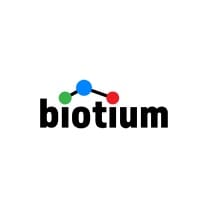
Latest news from our suppliers.
-
-
BIOTIUM | Biotium’s cytoplasm and lipid imaging probes
Biotium’s cytoplasm and lipid imaging probes aid discovery of microglial triglyceride metabolism role in neurodegenerative immunity
Read More -
Denovix | QFX fluorometer – Unlock Fluorescence Freedom.
Many fluorometers have limited light sources that restrict your choices, forcing you to compromise either on sensitivity or the flexibility to use the best assay for your work. The QFX fluorometer is built to solve this, giving you assay flexibility and a range of DeNovix quantification assays that provide unmatched sensitivity and dynamic range. No […]
Read More -
Denovix | Enter to Win a CellDrop Automated Cell Counter!
Denovix is giving away a CellDrop Automated Cell Counter! Enter to win above, and complete additional actions to earn bonus entries. The giveaway is open to researchers worldwide and closes December 11th at 11:59 PM USA EST. Denovix CellDrop™ Cell Counter ORDER HERE
Read More -
BIOTIUM | Protocol: Fluorescent Western Blotting
To learn more about western blotting, including the advantages of near-infrared fluorescence detection, see Biotium’s webinar: Fundamentals of Western Immunoblotting: Chemiluminescence and NIR Multiplex Imaging (49:44). Materials required: Workflow overview: Total protein prestain kit (optional) Ponceau S (optional) Blocking buffer (see general considerations below) PBS or TBS with 0.1% Tween®-20 (see general consideration below) Primary […]
Read More -
BIOTIUM | Protocol: DNA Probe Labelling by PCR
This protocol can be adapted to use dUTP or dCTP labelled with other dyes, biotin, or haptens like digoxigenin. See Biotium’s full selection of labelled nucleotides.
Read More -
BIOTIUM | Protocol: Using Pluronic® F-127 to Solubilize Dyes for Cell Loading
Pluronic® F-127 is a nonionic detergent useful for solubilizing hydrophobic molecules in aqueous solutions. Pluronic® F-127 is commonly used to solubilize hydrophobic AM ester forms of fluorescent indicator dyes for calcium and other ions for loading of the dyes into cells. It also can be used to solubilize other hydrophobic dyes or compounds to facilitate […]
Read More



